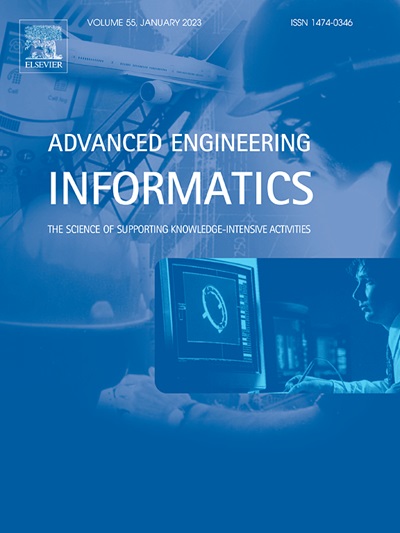Scanned point cloud registration for localization of aircraft access panel and complementary frame with weak features
IF 8
1区 工程技术
Q1 COMPUTER SCIENCE, ARTIFICIAL INTELLIGENCE
引用次数: 0
Abstract
The quality of trimming access panels on aircraft skin directly affects flight safety and aerodynamic characteristics of aircraft. It is crucial to obtain the trim allowance accurately in a single attempt. However, access panels and their complementary frames are thin-walled components with random surface curvature and weak features, making precise localization challenging. We propose a new efficient and precise localization framework that aligns the scanned point clouds of the access panel and complementary frame to their standard model. We design a contour inflection point feature (CIF) descriptor that facilitates feature retrieval and matching during the alignment process and addresses issues of weak features leading to matching errors. Additionally, we propose a proportional segmented weighted ICP (PSW-ICP) method for precise alignment, which overcomes the problem of local optima in the alignment process due to contour differences. Experiments with multiple types of access panels demonstrate that the proposed registration method significantly outperforms existing algorithms in terms of accuracy and efficiency, achieving a mean localization error of less than 0.07 mm. This provides valuable guidance for the digital assembly of aircraft skin.
求助全文
约1分钟内获得全文
求助全文
来源期刊

Advanced Engineering Informatics
工程技术-工程:综合
CiteScore
12.40
自引率
18.20%
发文量
292
审稿时长
45 days
期刊介绍:
Advanced Engineering Informatics is an international Journal that solicits research papers with an emphasis on 'knowledge' and 'engineering applications'. The Journal seeks original papers that report progress in applying methods of engineering informatics. These papers should have engineering relevance and help provide a scientific base for more reliable, spontaneous, and creative engineering decision-making. Additionally, papers should demonstrate the science of supporting knowledge-intensive engineering tasks and validate the generality, power, and scalability of new methods through rigorous evaluation, preferably both qualitatively and quantitatively. Abstracting and indexing for Advanced Engineering Informatics include Science Citation Index Expanded, Scopus and INSPEC.
 求助内容:
求助内容: 应助结果提醒方式:
应助结果提醒方式:


